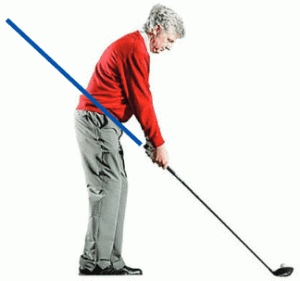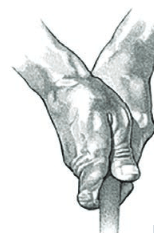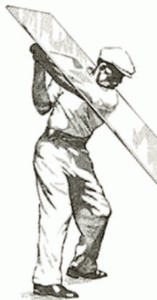Sixty-two years after its release, it still remains the game’s most groundbreaking book. Ben Hogan’s Five Lessons: The Modern Fundamentals of Golf resulted from a series of articles in Sports Illustrated and is still the holy bible of instruction for many who read it.
Today, we have super-slow-motion video, force plates to measure weight distribution throughout the swing, biomechanical studies of the “ideal” swing and the use of technology to measure the kinesthetics of the swing. This begs the question: How valid is Hogan’s instruction in our modern game with our modern understanding? Here, we examine a few of Hogan’s ideas and what we believe today.
The most enduring contribution Hogan made to the modern school of thought is the concept of the swing plane. Hogan described it as a line extending from the ball through the top of the shoulders, and the idea was for the lead arm to remain below this line at the top of the backswing.
Hogan used the image of a pane of glass to illustrate this point.
Today, we have a somewhat different idea of what the swing plane is. Most teachers use the initial shaft plane at address – assuming the student has a proper setup.
 The idea here is, at the top of the backswing, the lead arm would be parallel to the initial shaft angle at address, as represented by the blue line. Coming down into the ball, the shaft would at some point get parallel to the blue line, resulting in a swing path that should go towards the target at impact.
The idea here is, at the top of the backswing, the lead arm would be parallel to the initial shaft angle at address, as represented by the blue line. Coming down into the ball, the shaft would at some point get parallel to the blue line, resulting in a swing path that should go towards the target at impact.
Verdict: Hogan’s idea of the swing plane works for some people, but not all, as shorter golfers tend to go above that plane and taller golfers below. The more modern understanding works well for the vast majority of players.
 Grip
Grip
Hogan advocated a grip that was fairly weak by modern standards.
He wanted the top-hand V to point towards the rear ear and the lower-hand V to the middle of the chin.
Today, most golf teaching professionals want to see the Vs pointed more toward the rear shoulder. Dr. Ralph Mann, who pioneered extensive research of the golf swing, found that the average touring professional pointed their top-hand V between the chin and rear shoulder, while the lower-hand V was just inside the rear shoulder.
Verdict: Hogan fought a hook for much of his career and developed this grip to combat it. Most golfers today, including tour professionals, would fade or slice the ball with his grip.
Pivot
On the backswing, Hogan said the hands moved first, followed by the arms, shoulders, torso, hips and legs. On the downswing, the hips led the action with the torso rotating next, followed by the arms and hands. Hogan said the hands should do nothing active on the downswing until just above hip-height, carried there by the turning of the hips.
Today, the school of thought on the backswing is for the hands, arms, shoulders and torso to rotate virtually simultaneously. The modern tour professional, while still starting the downswing with the lower body, doesn’t do it nearly as early as the golfers from Hogan’s era.
Verdict: Hogan’s ideas on the pivot retain great value today. The most highly correlated mechanical factor between skill levels is how well someone transitions from the backswing to the downswing. The better the player, the more likely he or she is to have passive arms and hands starting down, with the lower body leading the way.
These are three of the main ideas Hogan gave us, and much of what he wrote has great importance to today’s teacher and student. This classic book is available at bookstores and online, and is likely to never go out of print. If you haven’t read this timeless tome, do yourself a favor and pick one up as soon as you can. It remains a highly compelling read.
Copyright © 2023 United States Golf Teachers Federation, All Rights Reserved
200 S. Indian River Drive, Suite #206, Fort Pierce, FL 34950
772-88-USGTF or 772-595-6490 - www.usgtf.com
200 S. Indian River Drive, Suite #206, Fort Pierce, FL 34950
772-88-USGTF or 772-595-6490 - www.usgtf.com

